October 17, 2024
Presidents Alone Won’t Decide the Dollar’s Fate
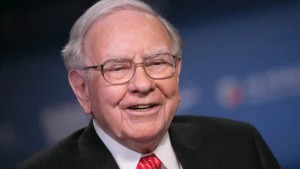 Seventeen years ago, Warren Buffett surprised his shareholders and dutiful followers when he announced that his company, Berkshire Hathaway, “held only one direct currency position” during the year.
Seventeen years ago, Warren Buffett surprised his shareholders and dutiful followers when he announced that his company, Berkshire Hathaway, “held only one direct currency position” during the year.
Berkshire sits on a mountain of cash; that’s Buffett’s entire business model: buy cash-producing businesses, then reinvest those cash profits to buy more “wonderful” cash-producing businesses.
Obviously great opportunities to buy wonderful companies at reasonable prices don’t always present themselves. So, in the meantime, while he patiently waits for those opportunities, Buffett has to find ways to invest Berkshire’s gigantic pile of cash into safe, short-term investments that generate reasonable rates of return.
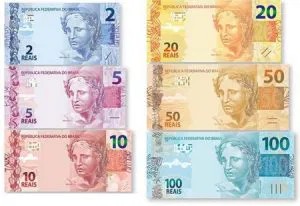 So where did he invest a big chunk of that cash pile in 2007? Brazil. Specifically in government bonds denominated in the local currency, i.e. the Brazilian real.
So where did he invest a big chunk of that cash pile in 2007? Brazil. Specifically in government bonds denominated in the local currency, i.e. the Brazilian real.
The reason was simple: US dollar interest rates were far too low. Rates in Brazil, by comparison, were incredibly high. Plus, the Brazilian economy was growing very quickly and the real becoming much stronger relative to the US dollar.
It was an unusual and counter-intuitive decision for Buffett, who has famously argued that one should “never bet against America.” In fact, as he explained in his annual shareholder letter that year, Brazil does not have a great track record when it comes to managing a currency.
“Five versions of Brazilian currency have, in effect, turned into confetti,” he wrote, which is why many wealthy Brazilians habitually parked their savings in US dollars. But this instinct to own US dollars cost them severely in the early 2000s.
The real had been appreciating so rapidly that any Brazilian who had put their savings in the “safe haven” of US dollars between 2002 and 2007 would have lost half of their purchasing power.
The important thing to understand here is that Buffett’s decision to hold some of Berkshire Hathaway’s uninvested capital (i.e. Berkshire’s “reserves”) in a different currency was NOT a political decision.
Neither the President of the United States, nor Congress, nor any Brazilian politician was involved.
On the contrary, it was a pure business/financial decision — one that probably started with a fairly low-level analyst at Berkshire, and the recommendation eventually made its way up to Buffett.
Buffett made the final decision, and his reasoning was simple: the US dollar was weak, the Brazilian real was strong, and Berkshire could generate much better returns in Brazil.
And it’s important to understand this logic if you want to get a good sense of what’s going to happen with the US dollar as the global reserve currency.
How America Lost its Big D!$k Energy
Eighty years ago, as world peace finally appeared to be in sight, a bunch of diplomats from around the world got together at a fancy hotel in New Hampshire to decide on what the new global financial system would look like after World War II was over.
The basics were pretty simple; everyone knew that the United States would dominate. America had the largest economy, the most powerful military, the most advanced technology, the most abundant natural resources, the most stable government, the biggest banks, and a gigantic, highly productive population. No other country even came close.
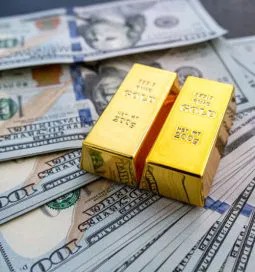 At the end of the conference, the representatives from their respective nations all over the world agreed to anoint the US dollar as the global reserve currency. The dollar was fixed in price to gold, and all other currencies’ exchange rates were fixed to the dollar.
At the end of the conference, the representatives from their respective nations all over the world agreed to anoint the US dollar as the global reserve currency. The dollar was fixed in price to gold, and all other currencies’ exchange rates were fixed to the dollar.
This meant that just about EVERY international transaction, cross-border trade deal, etc. took place in US dollars. And America kicked the whole thing off with the Marshall Plan, which effectively sprinkled hundreds of billions of dollars in Europe to help ally nations rebuild after the war.
This system lasted until the early 1970s when Richard Nixon (relying on authority that had been passed down by his predecessor LBJ) took the US dollar off the gold standard once and for all.
Yet the dollar still remained the global reserve currency — in large part because Nixon also made a deal ensuring that Saudi Arabia would sell oil ONLY in US dollars.
In short, Nixon made sure that there would still be plenty of demand for dollars, i.e. any country that wanted to buy oil (which was pretty much everyone) still had to hold US dollars.
On top of that, there was still plenty of trust in America; the national debt was relatively low. The government was still functional. And by the 1980s, inflation-adjusted interest rates were incredibly high. So, any foreign country or big foreign corporation holding US dollars was quite pleased with the return.
This trust and confidence lasted through the early 2000s. The US economy in the 1990s was booming. The government managed to run a couple of annual budget surpluses. The Soviet Union had collapsed. China was still a third world backwater. America was the lone superpower, and the dollar was not just the sensible option — it was the only option.
Then came 9/11, the War on Terror, and the War in Iraq. US foreign policy became very unpopular, world leaders openly criticized their US counterparts.
Most of all, the wars became very expensive. Deficit spending ballooned, and the national debt doubled in no time.
The Federal Reserve slashed interest rates in response, kicking off a gigantic financial bubble. Real estate prices went to the moon, causing a massive crash and financial panic in 2008.
The government and central bank both responded with unprecedented bailouts; America’s national debt doubled again, and the Federal Reserve’s balance sheet increased 5x.
The entire 2010s were marked by constant government spending binges, plus the origins of hyper-partisanship, extreme government dysfunction, and highly divisive culture wars. Debt ceiling crises and government shutdowns became commonplace, and the government began weaponizing the dollar.
The Treasury Department routinely threatened foreign governments and businesses with losing access to the dollar if they didn’t do Uncle Sam’s bidding. Foreign banks were fined billions of dollars for doing business with individuals that the US government didn’t like. And anyone who refused to pay was cut-off from the US financial system.
Then along came COVID, and the government spent more in 18-months than it did (in inflation-adjusted terms) fighting the Nazis over several years in World War II.
Deficits skyrocketed. The national debt began to spiral out of control.
And America suffered humiliation after humiliation — from the withdrawal from Afghanistan, to the President who shakes hands with thin air. Soaring inflation was another humiliation; the central bank failed to see it coming. Nor was inflation “transitory” as they insisted.
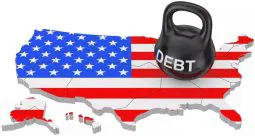 Today the national debt is more than $35 trillion. The budget deficit for FY24, which just ended a couple of weeks ago, was nearly $2 trillion. The trend is also getting worse. The government’s own internal projections show an additional $22 trillion in deficit spending over the next decade.
Today the national debt is more than $35 trillion. The budget deficit for FY24, which just ended a couple of weeks ago, was nearly $2 trillion. The trend is also getting worse. The government’s own internal projections show an additional $22 trillion in deficit spending over the next decade.
Most of all, America’s social divisions and government dysfunction are on full display. Politicians find no common ground. There is very little compromise, very little agreement. And priorities seem totally askew.
Countless billions are shoveled out the door for Ukraine, with nothing left over to address domestic priorities or emergencies. America’s adversaries pounce on the government’s every display of weakness. And all this chips away at foreigners’ confidence in the US dollar as the global reserve currency.
More Dollar Threats Won’t Work.
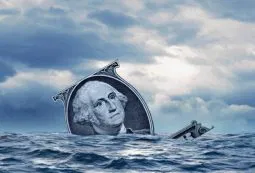 At a campaign rally in September, President Trump promised that if he is elected, “We will keep the US dollar as the world’s reserve currency. It is currently under major siege. Many countries are leaving the dollar.”
At a campaign rally in September, President Trump promised that if he is elected, “We will keep the US dollar as the world’s reserve currency. It is currently under major siege. Many countries are leaving the dollar.”
And he’s right. Trump is the only remaining Presidential candidate who is even acknowledging this massive risk for the US. (Bobby Kennedy understood the problem as well, but he’s out.)
Harris, on the other hand, seems to have no clue about the dollar, or how massive deficits and debt destabilize it. And as we discussed in the August Letter, I am confident four years of Kamala will spell the end of the US dollar’s reserve status.
The problem is, Trump’s solution doesn’t really cut it.
In the same stump speech, Trump said that he will threaten and bully countries into continuing to use the dollar. For example, if other countries say they want to “stop using the dollar,” then he could impose 100% tariffs or even outright ban imports of that country’s goods and services.
But threats like these are among the reasons why so many places around the world are interested in finding an alternative to the US dollar.
Again, this weaponization really began under George W. Bush, whose USA PATRIOT Act first gave him the authority to threaten every dollar user in the world. But it was Comrade Obama who took the dollar’s weaponization to another whole level.
One notable example was his $8 BILLION fine against a French bank for doing business with a country that the US government didn’t like. Well, said country wasn’t sanctioned by France, so the bank was operating in a perfectly legal way.
But Obama didn’t care. So, he kneecapped the French bank with an unprecedented penalty. And if the bank didn’t pay, he threatened to cut off their access to the dollar. The French government went nuts, but the Obama administration kept going.
When Obama signed the Foreign Account Tax Compliance Act (FATCA) into law, he required every single bank in the world to hand over information about ALL of their customers to Uncle Sam. And if they didn’t comply? Obama would cut off their access to the dollar.
This threat became routine. Now, any time a country or company around the world does something the US doesn’t like, they’re threatened with sanctions or being cut off from the dollar system.
The problem is this repeated use of threats is causing countries to rethink their reliance on the US dollar.
China is sitting on trillions of dollars in US assets and knows full well that if push comes to shove, the US could confiscate it all with a mouse click. Poof, there goes trillions of surplus.
They’ve seen it happen — Russia was cut off from the dollar system when it invaded Ukraine.
It’s even been done to allied nations.
In 2018, the US sanctioned Turkey’s Minister of Interior and Minister of Justice in a dispute over a detained American. Their US assets were frozen, and the US forbade anyone using US dollars to transact with them. These and other actions shook confidence in the Turkish economy and devalued its currency.
These threats make countries want to use the dollar less, not more.
The right way to get “countries” (I’ll come back to this) to keep using the US dollar is to be strong. Have a solid federal balance sheet. Run a surplus. Spend within your means. Smack adversary nations who fall out of line. Have a functional government. Maintain a sound currency. Stop taking your status for granted.
In short — more carrot, less stick. Otherwise, the world will keep looking for alternatives.
This Is Not a Political Decision
We opened with a story about Berkshire Hathaway to illustrate an important point: the decision to use (or not use) the US dollar for international trade is NOT a political decision. It’s a business one.
Any discussion about the reserve currency usually involves countries, i.e. “China will ditch the dollar” or “Russia and Iran agree to trade in rubles,” or some such assertion.
But this is a vast oversimplification, because ‘countries’ (i.e. governments) do not typically make all the decisions related to currency.
Governments and central banks do get to choose how to hold their savings and economic surplus, often known as a nation’s foreign reserves. They hold foreign currency (predominantly US dollars, though others as well) in the event that they need to intervene in financial markets to support their currency and stabilize the exchange rate.
But it’s up to each foreign government and central bank to decide how much foreign reserves they want to hold, as well as which currencies.
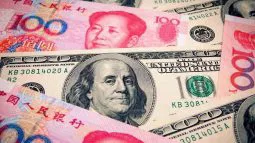 So, in this case, yes, “China” could decide to ditch the dollar. Or at a minimum, reduce the proportion of their foreign reserves that are held in US dollars. And this has definitely been happening — central banks have cut their US dollar reserves to 54.8% of their holdings, down from around 70% in the late 1990s.
So, in this case, yes, “China” could decide to ditch the dollar. Or at a minimum, reduce the proportion of their foreign reserves that are held in US dollars. And this has definitely been happening — central banks have cut their US dollar reserves to 54.8% of their holdings, down from around 70% in the late 1990s.
54.8% is obviously still high. But we see the decline accelerating over the next several years.
For the time being, the primary way that governments and central banks hold their US dollar reserves is by owning US government bonds, quite simply because the market is so vast and liquid.
Remember, government bonds are essentially the same as the national debt. So, the market is enormous — $35 trillion and growing. In a bizarre way, the size of the market makes US debt an attractive instrument for foreign governments and central banks.
When the Chinese government has an extra $500 billion that it needs to hold in reserve, it can’t just go buy any random asset. Even something like Apple stock (with its $3 trillion plus market cap) isn’t big enough for China to easily buy $500 billion worth.
But with a $35 trillion national debt, the US can quickly and easily sell $500 billion worth of government bonds to China.
Sure, there are some alternatives — for example, the euro. The problem with the euro is that you’re buying the debt of hopelessly unproductive countries, like Greece and Italy, in addition to more stable economies, like France and Germany. It’s a strange mix.
The US government may be dysfunctional, but it’s one single entity… so Treasurys are a single market. And being able to move so much money in and out of a single market is one of the things that makes the dollar somewhat viable as a reserve.
But there are limits. Again, foreign governments and central banks see America’s obvious fiscal problems, and they’re planning accordingly. We’ll talk about how they’re doing that in a moment.
Remember, however, it’s not just governments and central banks. Businesses decide which currency they want to use as well.
Berkshire Hathaway decided to hold Brazilian real. No government or central bank was involved.
Taiwan Semiconductor could decide to start charging Nvidia in local currency (the ‘New Taiwan Dollar’) rather than US dollars. Airbus could decide to charge American Airlines in euros.
These sorts of decisions are made every single day. Businesses will decide what’s best for their bottom line irrespective of politics.
And as Asian consumers grow into a more and more powerful economic force, it’s likely that many businesses will start to invoice and settle trade in Asian currencies. They’ll probably also hold a portion of their balance sheet reserves in those currencies.
And there’s nothing the US government can do about it. The White House can’t go after some medium-sized company in Australia or India because they decided to use renminbi with their Chinese customers.
These businesses are making decisions based on inflation, economic stability, and growth in their regions — not US politics. And as this trend continues, we will most likely see continued, reduced demand for US dollars in the future.
Why Central Banks Are Buying Gold
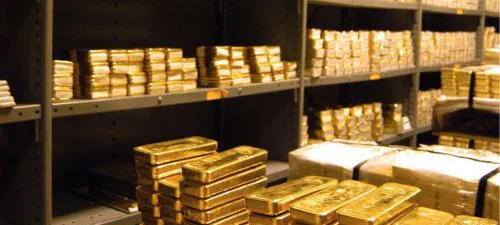
Earlier we talked about central banks looking for an alternative, and we’ve discussed this matter in the past as well.
Similar to how the market for US Treasury Bonds is enormous, the market for gold is also quite large. The gold market is not as big as Treasurys — about $18 trillion versus $35 trillion — but it’s big enough that central banks can move hundreds of billions in and out of gold without an issue.
Another great reason for them to choose gold is that it is a universal asset. From North Korea to Argentina, everyone recognizes gold’s value as a traditional reserve asset. And it has essentially been that way for 5,000 years.
The best part? There’s almost no downside.
If the dollar’s dominance continues to decline, central banks who hold gold will be in a strong position. The price of gold will go through the roof, and they’ll have a strategic asset they can convert into anything else.
But if they’re wrong, and, by some miracle, the US dollar remains the global reserve currency, they can always sell their gold and move back into dollars — probably turning a profit in the process.
There’s very little downside to this approach. This is why central banks are buying gold.
And it’s why they are not buying silver — the silver market is too small. It’s also why they’re not buying gold stocks or mining companies — the market is simply too small.
They’re moving out of US dollars and into gold because it’s a safe, reliable asset, with a lot of liquidity, and a long history of retaining value.
The Gold Royalty Model

We haven’t been shy about what we believe this situation could do for the price of gold.
In a typical year, central banks around the world buy an average of roughly 500 metric tons of gold.
But from 2022 through mid-2024, that figure doubled, with central banks purchasing an average of 1,000 tons per year.
In other words, central banks have purchased an additional 500 tons per year over the past 2 ½ years… for a total of 1,250 metric tons of ‘excess’ central bank gold demand since early 2022.
The value of these 1,250 metric tons of gold over the past few years amounts to about $80 billion.
Central banks around the world, from Poland to China to Mongolia to India to Singapore, used some of their foreign reserve stockpiles of US dollars to buy gold.
This means that $80 billion worth of foreign reserves that was taken out of US dollars and invested in gold caused the gold price to surge from $1650 to $2650.
More than $8 TRILLION US dollars in total are sitting on central bank balance sheets around the world.
So, $80 billion was enough to make gold rise from $1650 to $2650… yet central banks still have more than 100x as much US dollar reserves on their balance sheets.
What will happen to the gold price if the foreign central banks invest even 5% of their reserves into gold? What about 20%?
This is why we believe a gold price of $10,000 in the next few years is just a starting point.
If the US dollar truly lost its reserve status, and there was a scramble to convert dollars into gold, I wouldn’t be surprised at $25,000 per ounce gold.
That being said, I can’t deny that currently, gold sits at its all-time high. And it can be uncomfortable to invest in an asset at its all-time high, however promising the future prospects.
In past issues, I’ve pointed out that gold miners, however, are nowhere near their all-time highs. In fact, many are deeply discounted compared to the price of gold.
Today, I want to talk about another way to gain exposure to gold — royalty/ streaming companies.
Franco-Nevada is a fantastic example: it is not in the business of either operating mines or exploring for precious metals – it’s purely a portfolio company.
Mining companies have to deploy vast sums of money to construct, operate and maintain their mines. Royalty companies have a much ‘lighter’ financial model.
Royalty companies invest in mines and mining companies. But rather than become shareholders and take a large amount of risk, they instead invest an upfront amount in exchange for royalties which are typically based on either the revenue or the profit of the mine.
After the initial capital commitment, the royalty owner does not bear any responsibility for ongoing expenditure, nor does it have to operate a dangerous and complex business with thousands of employees.
Instead, they act as fund managers who invest capital and receive an ongoing return on their investment for as long as the mine is operational.
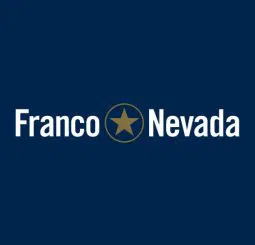 It’s a highly profitable business model. Gold royalty company Franco Nevada, for example, has generated a 38% compound annual growth rate for decades since its IPO.
It’s a highly profitable business model. Gold royalty company Franco Nevada, for example, has generated a 38% compound annual growth rate for decades since its IPO.
Franco-Nevada Mining Corporation Limited (“Old Franco”) began putting together its royalty portfolio in 1985. It was acquired by Newmont Mining in 2002 for $3.2 billion. In late 2007 Franco-Nevada was essentially reformed under a team of old and new employees, and in December of that year went public.
Until 2020, the Franco-Nevada Chairman was Pierre Lassonde, a legend in mining circles. He started the company in 1982. It was the first gold royalty company. And in 1985, Lassonde saw a small advertisement in the Reno Gazette for a $2 million royalty on a mine in Nevada and bought it.
Two years later, Barrick Gold acquired that property and discovered the Goldstrike deposit (the largest in North America). Goldstrike has since produced 44 million ounces of gold.
Today Franco is a nearly $24 billion royalty giant.
Franco-Nevada has a portfolio of dozens of producing gold assets, and over 100 in exploration, as well as a number of oil and gas producing assets.
Even though Franco-Nevada invests in properties all over the world, it doesn’t run them.
As Franco CEO David Harquail says, “If there’s a problem at one of our royalty assets, we’re the last people that get called. We don’t run the yellow trucks. It’s the operator that handles those issues. We spend our time thinking where next to invest.”
Franco-Nevada’s 2014 deal with Lundin Mining in Chile illustrates the advantages of a royalty or streaming deal. Franco paid $648 million for a streaming contract.
As part of this deal, to this day, Franco-Nevada can buy gold for $400 an ounce, and silver for $4 an ounce. This is a streaming deal, where after the initial upfront investment, it locks in these rates for future purchases.
That means, today, Franco-Nevada pockets about $2,250 per ounce of gold, and $28 per ounce of silver, that it sells from this deal.
That’s why Franco-Nevada is able to maintain massive cash flows — an operating cash flow near $1 billion in 2023 — with zero debt.
At first glance, Franco’s P/E (price to earnings) ratio around 32 doesn’t fit what we typically look for in undervalued businesses. But there’s more to royalty companies than traditional valuation metrics can reveal.
Royalty companies’ earnings depend on the underlying value of the asset. All things equal, when gold is higher, Franco-Nevada makes more money.
That’s why Franco-Nevada could be another way to gain exposure to a massive bull run in gold.
For example, in mid-December 2007, gold traded at $803 an ounce. By late August 2011, it had run up to $1,889 an ounce – a 135% return.
In the same period, Franco-Nevada’s share price rose from $13.63 to $44.54 – a 227% return. That’s leverage.
But that hasn’t happened yet this time around.
While the price of gold has increased by 65% since April of 2020, Franco-Nevada is currently trading at the same price it was in April 2020.
An investment in Franco-Nevada is a completely different tactic than an investment in, for example, an operating gold mine we mentioned in July’s letter, Thor Explorations.
There is a lot more upside to Thor, which could re-rate multiples higher from its current P/E of 4x. But there is also a lot more risk.
Thor is in the perfect spot on what’s called the Lassonde Curve, named after the legendary Franco Nevada chairman, mentioned earlier. That’s the point in a mining company’s life cycle when investors are tired after the lengthy and uncertain exploration phase, right when it begins production.
But they have to properly operate the mine and navigate all sorts of other moving parts. As we mentioned before, Franco-Nevada does not.
The other thing to consider is that mining companies can often take a hit during inflationary times, when the costs of production, equipment, and salaries rise. Royalty companies do not.
Here’s a simple example: Let’s say “Mining Company” produces gold at a cost of $1,200 per ounce, and the price of gold is $2,000. Its margin is $800 per ounce.
“Royalty Company” has a deal with Mining Company to receive 5% of its revenue, meaning Royalty Company gets $100 per ounce (5% of $2,000).
If inflation drives the price of gold up to $3,000, but Mining Company’s production costs also rise to $2,200, its profit margin stays the same at $800 per ounce. However, Royalty Company now earns $150 per ounce (5% of $3,000), increasing its revenue by 50%, without any rise in costs.
So, while Mining Company’s profit remains flat, Royalty Company benefits significantly from inflation.
This is why we like royalty companies so much, especially given that our future outlook is so inflationary.
All Roads Lead to Gold
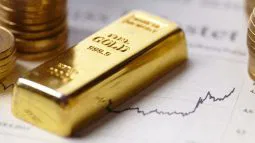
The US government has a lot of debt. The US continues to add to that debt with record deficits. The costs of servicing that debt grow with every year of refinancing at higher rates.
And the Federal Reserve has already started on its “solution” — to slash interest rates, and print money, to bail the government out.
All of this is extremely inflationary. That’s why we keep coming back to real assets — critical materials, energy, and productive technology that cannot be conjured by governments and central banks.
These always do well during inflationary times. And right now, is an opportunity in the cycle to pick them up for historically cheap prices. That’s a double whammy.
But gold is a triple whammy.
It’s a real asset. The businesses producing it are historically cheap. And there is a clear catalyst to re-rate them higher: record gold prices, spurred by massive, and likely just beginning, buying by central banks.
Simply investing in physical gold is one way to capture the upside of this situation.
But regardless of how rosy gold’s future looks, it can be uncomfortable to buy at all-time highs.
That’s one reason to consider investing in gold companies. Another is the potential for monetary gains that outstrip the rising price of gold.
There are also multiple avenues here, which come with different potential payoffs, and different risks.
Mining companies have not even begun to see the type of investment physical gold has, despite their revenue literally being gold. In some ways, buying these mining companies is like buying gold at $1,000 an ounce — about the amount it costs companies like Thor to extract it.
But this also comes with significant risks. There are third party intermediaries between you and your gold. The management has to run the company properly. Operations have to continue unimpeded by global events. And while the valuations of both gold and the mining companies, will likely rise with inflation, costs of production also rise.
Royalty companies cut out some, but not all, of that risk. They do not have to operate mines, and if properly diversified, don’t have to worry about geopolitical events that disrupt one or two mining sites. They can better weather, or even benefit from, inflation.
But companies, like Franco-Nevada, are not as undervalued as mining companies like Thor, and may not have as high to rally.
Overall, there is no right or wrong answer on how best to invest in gold.
We believe diversification is always a smart strategy. How you allocate those investments will depend on your own goals, risk preferences, and level of agreement with our thesis about the coming gold-based financial system.
But doing nothing to gain exposure to gold comes with a massive risk of missing out on inflation-proofing your future.
Peter Schiff is the controlling owner of Euro Pacific Asset Management, an investment adviser registered with the U,S. Securities & Exchange Commission. Euro Pacific Asset Management as a firm and Peter Schiff individually own shares in Franco-Nevada. Any specific mention of Franco-Nevada in this newsletter should not be deemed to be a recommendation to buy or sell shares of Franco-Nevada. Investors should carefully consider these facts before making any investment decisions in Franco-Nevada.
Back To Leeconomics.com
